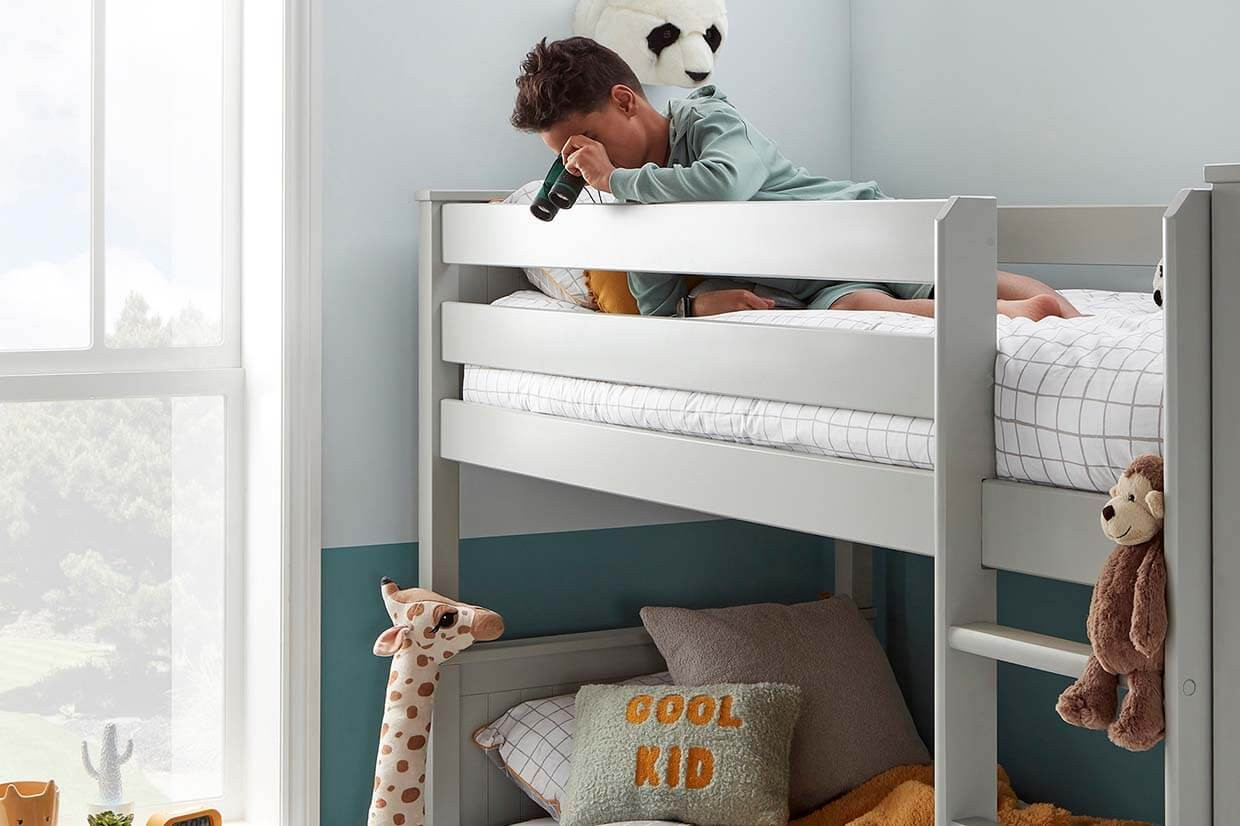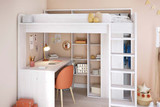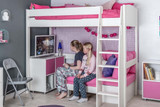Why you shouldn’t buy a bunk bed
If you have children similar in age, or often have guests or family visiting with kids who will be sleeping over, a bunk bed can seem like a great, space saving option. Unfortunately, they’re not always the right solution, with a number of considerations to take into account before making your decision. Here we discuss the pros and cons of bunk beds and how to decide if they’ll work for you and your family.
Space
One of the key advantages of a bunk bed is space. If your little ones are sharing a room and space is tight, a bunk bed can be a really great choice, especially if you’re planning on growing your family further and need to arrange for your children to share a room. However, there are other space saving options to consider if you’re short on room, why not look at two beds with lots of underbed storage, or even a trundle bed that can be pulled out when guests visit? It’s also really important that children have a sense of privacy and a space to call their own. This can be done easily by creating a divide in a room, potentially with a curtain or cleverly placed furniture to help corner off their own space while still sharing a room, something that cannot be achieved with a bunk bed.
Sleeping at Height
Although there’s no age specified for when a child can sleep on a top bunk, it’s recommended that kids under 6 don’t make this transition. The important thing is to wait until your child is ready to sleep on the elevated surface and skilled enough to negotiate the ladders, especially in the dark if they’re getting up at night. If you’re worried they might climb out of the bed or struggle to get up and down the ladder, an alternative option should be considered. Some children might find it scary or difficult being up high in the bed when they awake in the dark, as an average bunk bed is six feet tall which could be a nasty fall if they’re not confident with the ladders. A mid sleeper could be a better option if you’re nervous about this, they’re lower than a bunk bed with space under for storage.
Claustrophobia
If small spaces are an issue for any of your family members, a bunk bed may not be a consideration for you. A lot of people feel enclosed in the bottom bunk, and even the top bunk too if it’s close to the ceiling. Claustrophobia can make people feel panicked, and the space between bunks in bunk beds causes a trapped and unable to move sensation. This can even present itself when cleaning the bunk beds, as the space is often quite limited.
Assembly
Most bunk beds come with easy to follow instructions, or you can always hire someone to visit your home and help you with the assembly. Manoeuvring bunk beds can be tricky, so you may need to consider that you’ll need to assemble the furniture in the room it will be placed in.
Investing in the Future
To make the most of furniture pieces you purchase when your kids are younger, think about the longevity of the items. If you purchase a bunk bed, how long will this feasibly be used by your children before they grow out of it? Our BLOC range can be split from a bunk bed to two singles, so this could be a great choice to give you more options in the future. Alternatively, a cabin bed with a pull out desk can give a good sense of privacy in a shared room, providing a space for crafts and colouring when younger and serving as a study space for homework when they’re older.
Cleaning and Maintaining
Cleaning a bunk bed is quite a big task, even the weekly sheet washing can be a nightmare! Adding the sheets to both mattresses can be difficult due to the small and high up spaces, it can be fiddly to reach across and make sure the beds are made neatly. When it comes to cleaning, there can be lots of trick-to-reach surfaces to try and access including the underside of the top bunk and the ladder rungs.
It’s not Fair!
If you’re thinking of opting for a bunk bed to appease your children, sibling rivalry could cause some drama over who gets the top and bottom bunk! If you’ve got two little ones who are in their competitive stage, purchasing two storage beds such as the Vermont storage bed can still help with space saving while giving your kids the same furniture pieces to avoid any competition or rivalry. Keeping everything as similar as possible for siblings can reduce any feelings of unfairness and encourage more positive feelings.
Alternatives?
The best alternatives to bunk beds are beds that still provide space saving solutions. A high sleeper is a great option for this, with space underneath for additional storage, desk space or sofa bed if needed. This also gives each child their own small section to call their own which is really important in shared spaces, it can give a sense of privacy and somewhere to keep their belongings to keep them separate from siblings. If you’re looking for beds which can host guests, a trundle is ideal with a pull out bed that can be easily tucked away when not needed.
The Takeaway
When we think of shared rooms for kids, bunk beds seem like the most obvious choice, and for good reason as they do provide a great solution for some families. On the other hand, they might not be the right fit and doing full research on how to make the most of your space, your children’s needs and how to provide the best environment for them to thrive is the only way to work out which bed will work best for them. Investing in furniture pieces that will grow with your child and adapt through the years.
Recent Posts
-
Unlocking the Potential of High Sleeper Beds for Teenagers
As teenagers go through all the ups and downs of being a teen, their likes and dislikes change a lot
-
Choosing Between a High Sleeper Bed vs. Mid Sleeper Bed
As your little one grows, so do their needs, and finding the perfect kids’ bed for them becomes









